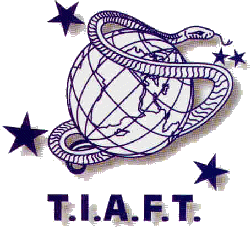The German Approach to Solving the Problem of Driving under the Influence of Drugs. ZERO TOLERANCE vs. IMPAIRMENT
 Manfred R. Moeller*, Stefan Steinmeyer, and Stefan Bregel
Manfred R. Moeller*, Stefan Steinmeyer, and Stefan Bregel
Institute of Legal Medicine, Saarland University, 66421 Homburg/Saar, Germany
In August 1998, a new law (A24a StVG) came into force in Germany sanctioning people suspected of driving under the influence of certain illicit drugs. The drugs are: Amphetamine, MDMA, MDE, Cannabis, Cocaine, Heroin, and Morphine (Heroin detected as morphine; cocaine as benzoylecgonine) According to the law, the presence of any of the drugs in any concentration in the blood of a subject is prima facie evidence of his/her impairment. The law is so new that there are no general guidelines followed by all the states in the Federal Republic of Germany.
In Saarland, when a driver is stopped (usually at a check point), and the police officer suspects that the driver has drugs in his system, the officer has two choices:
- order a blood test if he thinks the subject is unfit to drive safely, or
- he can first ask for a urine test if the signs of impairment are not very strong.
In the first situation where a blood sample is ordered directly, the case is referred to the court for criminal offence (if any psychoactive drugs are detected). The same procedure is followed in the case of an accident or when the police observe unsafe driving manoeuvres.
If in the second situation the urine test is negative, the subject is allowed to go home free with no penalty. However, if the urine test is positive, a blood sample is ordered. If any of the banned drugs of A24a StVG are detected in the blood, the subject is charged with an administrative offence which carries a fine of up to DM 500 (EUR 255) and a one month suspension of the
driver's license.
The success of this approach depends entirely on the accuracy of the officers' observations and the reliability of the urine and blood tests. The urine tests are presently under investigation in eight European countries in the ROSITA project. Laboratories performing blood tests must document their proficiency by mandatory participation in the GTFCh proficiency program. Furthermore, the police officers have to be trained to detect even moderate signs of drug impairment. Such a training program is now available in Germany and is being translated into other languages.
Keywords: Zero Tolerance, Analytical Approach, Illicit Drugs.
The Elaboration of the New 'Per se' Legislation on Drugs and Driving in Belgium: an Insider's View
 Alain G. Verstraete*1, Viviane A. Maes2
Alain G. Verstraete*1, Viviane A. Maes2
1 Laboratory of Clinical Biology-Toxicology, University Hospital, De Pintelaan 185, Gent, Belgium
2 Department of Clinical Chemistry-Toxicology, Academic Hospital, Free University of Brussels, Belgium
Awareness of the problem of driving under the influence of illicit drugs and (to a lesser extent) medicines has increased in Belgium recently. An impairment-type article has existed in the law for many years, but it is seldom enforced. In 1995 and 1996, different deputies introduced proposals for a law allowing sampling of blood or urine for the analysis of drugs. These proposals were never adopted.
After publication of the results of the Belgian Toxicology and Trauma Study (drugs were found in 19% of injured drivers) in December 1996, the Secretary of State for Security started working on a project of law, which was adopted by the Council of Ministers in March 1997. According to this project, it was forbidden to drive a vehicle if substances known to impair driving could be detected by toxicological analysis. The list of drugs, the sample, the analysis method and the cutoffs would be determined later by Royal Decree. This draft was sent to the State Council, which made different remarks, one of which was that the list of substances, the method of their determination and the cutoffs should be written in the law.
The Secretary of State then set up an advisory committee, composed of toxicologists and a police officer who leads the drug program. A scientific report was written on the effects of drugs on driving, their concentrations in body fluids, and on the best methods of detecting impairing drugs. A compromise was found between the scientific recommendations and the political possibilities. A second, profoundly changed, project of law was then drafted.
A three-step process was proposed: (1) the assessment of external signs of the presence of drugs by a standardized test battery, (2) if the signs are detected, an on-site immunoassay for amphetamines, cannabinoids, cocaine metabolites or opiates in urine and (3) if the immunoassay is positive, blood sampling by a physician for GC/MS analysis. The analytical cutoffs mentioned in the law are: 2 ng/ml of THC, 20 ng/ml of free morphine, 50 ng/ml of amphetamine, MDMA, MDEA, MBDB, benzoylecgonine or cocaine. This was discussed in both houses of parliament, with a hearing of toxicologists in the parliamentary commission (and many interesting questions). The law was adopted unanimously (minus one abstention in the Senate) by both houses of parliament, and published in March 1999. A prevention campaign on medicines and driving was also set up.
Keywords: Drugs, DUID, Legislation.
Cutoff Concentrations for Drugs of Abuse in Saliva for DUI, DWI or other Driving-Related Crimes
 Vina Spiehler*1, Dene Baldwin2 and Christopher Hand2
Vina Spiehler*1, Dene Baldwin2 and Christopher Hand2
1 Newport Beach, CA 92663 USA
2 Cozart Bioscience Ltd, Abingdon, Oxfords, UK
Drug concentrations in saliva reflect the free, unbound parent drug and lipophilic metabolites. Since these are the forms of the drug which cross the blood-brain barrier and affect performance and behavior, saliva is a good specimen for detecting drug involvement in driving behavior. Drug concentrations in saliva are a function of saliva pH for drugs that have a pKa of between 5.5 and 8.5. This is true of many drugs of abuse. For these compounds the saliva/plasma ratio can vary between stimulated and unstimulated saliva. For this reason it is more conservative to use a cutoff value for drugs of abuse in saliva rather than to determine the absolute concentration. Theoretical range of saliva/plasma ratios over a saliva pH range of 6.4 - 7.6 were calculated for cocaine, amphetamine, methamphetamine, 6-monoacetylmorphine, morphine, codeine, methadone and diazepam and compared to published saliva/plasma ratios. The lowest ratio values were multiplied by the lower limit plasma levels for therapeutic or recreational effects from Uges (TIAFT Bulletin 1996, 26(1) Supplement). The resulting suggested cutoffs for saliva are: cocaine 60 ng/ml, amphetamine 56 ng/ml, methamphetamine 78 ng/ml, 6-MAM 30 ng/ml, morphine 60 ng/ml, codeine 165 ng/ml, methadone 50 ng/ml, diazepam 3.6 ng/m, alprazolam 1.5 ng/ml and nordiazepam 6 ng/ml.
Tetrahydrocannabinol (THC) and tetrahydrocannabinoic acid (THCA) are excreted in only trace amounts in saliva. Cannabinoids in saliva are usually due to residuals left in the mouth during ingestion or smoking of marijuana or marijuana products. A rather high cutoff concentration of 100 ng/ml THC is recommended based on literature reports. At this cutoff concentration a positive saliva result for THC will indicate recent smoking of marijuana.
These theoretical cutoff values will be compared to the results of field studies and clinical trials with the RapiScan on-site saliva drug test device. The RapiScan uses 1 ml of saliva collected with the OmniSal and diluted 1:1 with elution buffer. The Rapiscan uses a cutoff of 20 ng/ml for amphetamines, opiates, cocaine and 50 ng/ml for THC.
Keywords: Cutoff Concentrations, Drugs, Saliva.
Capillary Electrophoresis Instruments and Techniques for Forensic Toxicology Problem Solving
Jerzy Superata
MEDIM (Beckman Coulter), Warszawa, Poland
Capillary electrophoresis is a rapidly developing analytical technique. There is a number of its inherent features which make it particularly promising for toxicological applications. High analytical resolution and efficiency, speed, minimal sample usage and flexibility permitting quick change-over of capillaries buffers and/or detection systems are the most significant examples.
The latest generation of capillary electrophoresis instruments represented by P/ACE MDQ System (Beckman-Coulter) can provide the forensic toxicologist with accurate and reproducible analytical results that can be easily quantified, compared and documented. The spectral library of the diode array detection system facilitates identification of unknown chemicals. The other detection options include: UV, single or dual Laser Induced Fluorescence detectors for selectivity and sensitivity, mass spectrometer for positive identification. The optimised, effective capillary cooling enables most demanding applications (e.g. chiral analyses). The robotic, cooled autosampler can be used for on-line sample preparation and automation of new methods development.
The forensic and clinical toxicology problems solved by capillary electrophoresis range from analyses of inorganic ions, drugs of abuse, pharmaceuticals, metabolites, hormones, poisons, environmental pollutants, peptide, protein and other bio-toxins to monitoring changes in biological tissues exerted by toxic actions.
The applications are not limited to hydrophilic or ionizable compounds.
Different techniques can be applied to achieve the best analytical results even with difficult samples.
Capillary Zone Electrophoresis, Isotachophoresis, Micellar Electrokinetic Capillary Chromatography, Capillary Gel Electrophoresis, Capillary Isoelectric Focusing, Capillary Electrochromatography or Capillary Electrophoresis - Mass Spectrometry - can be used sequentially or combined on the same instrument according to specific needs.





